Canon Announces Fall Products
It’s fall, Photokina 2010 is coming up, and just a week ago Nikon announced their fall new products. Today, it’s Canon’s turn.
EOS 60D: High Low-End, not Low High-End
First up is the impressive as a consumer class camera, but maybe not so much as a replacement for the EOS 50D. What’s gone is the Aluminum/Magnesium body, the 6.3 FPS frame rate, AF micro adjustments, and compact flash cards.
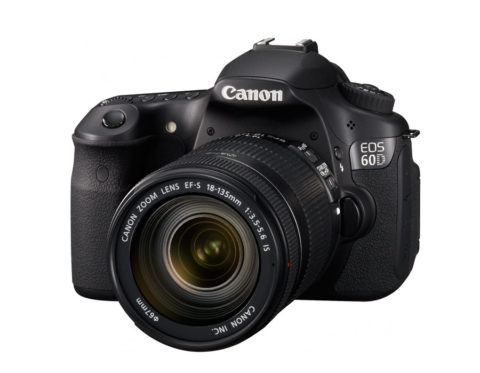
Out with the old in with the new. New to the EOS 60D, among other things, is:
- A 63-zone color sensitive meter
- +/- 3 Stops of exposure compensation
- A combination multi-controller and rear dial ripped right from the PowerShot G11
- An articulating high resolution screen and wireless flash control
- In camera image resizing
- Creative image filters (soft focus, grainy B&W, Toy Camera effect, and a tilt-shift effect)
Clearly canon is putting more and more focus on video in their new SLRs, though the lack of video information on the Canon USA product page is a bit of an odd oversight. The EOS 60D has full manual video control, including manual gain control of the audio. It also has in camera editing functionality, which I guess is handy given what appears to be the target market for the EOS 60D.
So while the spec list is fairly impressive, I’m not sure the camera is. Not to me at least. There is one new feature that I really like. The integrated multi-controller and secondary control dial does make for a much better UI design when it comes to using the multi-controller ot select AF points, especially when you have a vertical grip attached to the camera. In fact this has been one of my major peeves with SLR UI design for a long time.
Using the multi-controller to selection AF points is unbeatable fast, however, when you’re using a vertical grip it’s virtually impossible since the multi-controller is now way out of finger’s reach. Nikon got around this on their D300(s) and D700 bodies by adding a second controller to the MB-D10 grip. The combination controller on the EOS 60D appears to solve the issue for Canon, at least on the lower end cameras–the professional bodies are still woefully lacking when it comes to having a properly designed user interface.
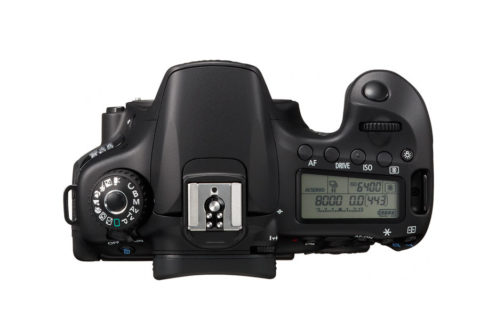
There’s another UI change that isn’t so impressive, however. On the 50D and it’s predecessor, 6 of the most important functions–ISO, drive mode, AF mode, metering mode, white balance, and flash exposure compensation–were controlled by 3 buttons in front of the top LCD. I actually think this is one of the best UI features of any Camera I’ve handled. Need to bump the ISO, push the first button turn the main dial, no need to even take your eye away from the view finder.
The dual mode buttons in conjunction with the two control dials were simple, compact, and intuitive. Never mind at this point well established. The EOS 60D apparently eschews that for a more Rebel–or dare I say it EOS 1 series–style single mode button. The new camera replaces the elegant 3 button solution with 4 (not including the LED button), AF mode, drive mode, ISO, and metering mode. White balance and flash exposure compensation are nowhere to be found. I assume you have to go though a menu for them now.
The EOS 60D is expected to retail (body only) for $1100, and should be available towards the end of September.
New Glass: Go Pro or Go Home
New glass is always a much anticipated event. The months proceeding any of Canon’s major announcement times send the rumor sites into a virtual frenzy theorizing and speculating over every possible lens. One can dream, right?
EF 8-15 f/4L Fisheye USM
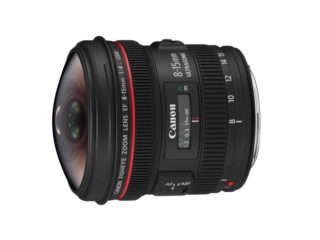 This is something akin to a replacement for the old EF 15mm f/2.8 Fisheye, even though the EF 15mm f/2.8 Fisheye hasn’t been discontinued. On a full frame sensor the lens has a circular 180° field of view at 8mm. At 15mm, it’s like the current fisheye, a 180° diagonal field of view. On a crop camera, at 8mm you get a full 180° diagonal field of view. Not a bad deal if you use a fisheye.
This is something akin to a replacement for the old EF 15mm f/2.8 Fisheye, even though the EF 15mm f/2.8 Fisheye hasn’t been discontinued. On a full frame sensor the lens has a circular 180° field of view at 8mm. At 15mm, it’s like the current fisheye, a 180° diagonal field of view. On a crop camera, at 8mm you get a full 180° diagonal field of view. Not a bad deal if you use a fisheye.
Estimated list price is $1400, and the lens is expected to be available in January of 2011.
EF 70-300 f/4-5.6L IS USM
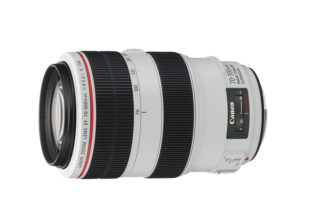 Lets start with what it is. It appears to be an L class replacement for the EF 70-300mm f/4-5.6 IS USM. It’s a slow, variable aperture lens, so it’s not exactly in the same class as the EF 70-200mm f/4Ls (either with or without IS), nor is it as long as the EF 100-400mm f/4.5-5.6L IS USM. It is, however, weather sealed.
Lets start with what it is. It appears to be an L class replacement for the EF 70-300mm f/4-5.6 IS USM. It’s a slow, variable aperture lens, so it’s not exactly in the same class as the EF 70-200mm f/4Ls (either with or without IS), nor is it as long as the EF 100-400mm f/4.5-5.6L IS USM. It is, however, weather sealed.
What this lens really is, at least to me, is an enigma. Canon had a perfectly good, if not slightly soft EF 70-300mm f/4-5.6 IS USM. It was the reasonably priced and it’s been removed from Canon’s website (at least the USA site) which tends to mean that it’s been discontinued. The replacement is apparently this lens. Boy does that leave a gaping hole in Canon’s lineup. There’s the two non-stabilized, mediocre–kit lens–quality 75-300’s at the $200 price point and the non-stabilized EF 100-300mm f/4.5-5.6 USM at the $500 price point (where the old 70-300 IS lived). If you want a stabilized 70-300mm lens, you jump then to $1400 for the EF 70-300mm f/4.5-5.6 DO IS USM, and then to the new $1500 EF 70-300mm f/4-5.6L IS USM.
There are two questions for me. First, why another L telephoto zoom? Canon has 13 telephoto zooms listed on their site now; 1 is an EF-S lens, 3 are the a fore mentioned low end 75-300s/100-300, the final non L lens is the 70-300 DO. Eight, yes, eight of the 13 telephoto zooms are L. Doesn’t that diminish the L branding as a premium when almost all the lenses are L branded?
Second is a matter of the lens’s described focus system.
Lens extension via inner focusing and focus cam plus floating mechanism.
Is it me, or does that sound suspiciously like the front element extends when the lens focuses. Extending front elements tend to be a feature of inexpensive lenses, not premium pro level ones. If that’s the case, this will be one of the first L lenses I can think of that isn’t an internal or rear focusing design.
The EF 70-300mm f/4-5.6L IS USM is expected to retail for about $1500 and be available in October of this year.
EF 300mm f/2.8L IS II USM
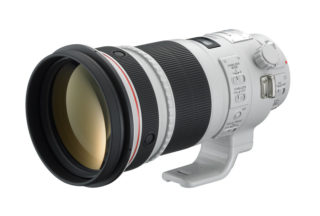 I so want one of these. The current one is fast both to focus and in gathering light, tack sharp, not terribly heavy, and reasonably sharp when paired with a 1.4 or 2x teleconverter making it pretty flexible. The new one improves the IS system (it’s now good for 4 stops), has 2 fluorite elements to reduce chromatic aberrations, adds the latest in Canon’s coatings to reduce ghosting and flare, and is lighter to boot. Wow! Wow! Wow!
I so want one of these. The current one is fast both to focus and in gathering light, tack sharp, not terribly heavy, and reasonably sharp when paired with a 1.4 or 2x teleconverter making it pretty flexible. The new one improves the IS system (it’s now good for 4 stops), has 2 fluorite elements to reduce chromatic aberrations, adds the latest in Canon’s coatings to reduce ghosting and flare, and is lighter to boot. Wow! Wow! Wow!
The downside? The price has jumped from about $5000 to $7000.
The lens is expected to be available in December with an est retail price of $7000.
EF 400mm f/2.8 L IS II USM
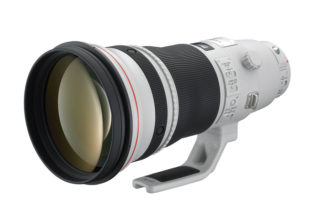 If the EF 300mm f/2.8L IS II USM was impressive, the bigger badder 400mm brother is simply jaw dropping. Take the same fancy coatings, optics, and stabilizer, make the lens 100mm longer while keeping the f/2.8 aperture and you have the EF 400mm f/2.8L IS II USM. Of course, anybody who owns the EF 400mm f/2.8L IS USM knows right away you don’t get a 400mm f/2.8 lens with out your back (or your monopod) paying for it. The first generation 400 f/2.8L IS USM weighed in at a back breaking 11.8 pounds. The mark 2, a feather weight 8.5 pounds. WOW! That’s almost 2 pounds lighter than Nikon’s 400mm f/2.8 VR II.
If the EF 300mm f/2.8L IS II USM was impressive, the bigger badder 400mm brother is simply jaw dropping. Take the same fancy coatings, optics, and stabilizer, make the lens 100mm longer while keeping the f/2.8 aperture and you have the EF 400mm f/2.8L IS II USM. Of course, anybody who owns the EF 400mm f/2.8L IS USM knows right away you don’t get a 400mm f/2.8 lens with out your back (or your monopod) paying for it. The first generation 400 f/2.8L IS USM weighed in at a back breaking 11.8 pounds. The mark 2, a feather weight 8.5 pounds. WOW! That’s almost 2 pounds lighter than Nikon’s 400mm f/2.8 VR II.
The only real downside to the EF 400mm f/2.8L IS II USM appears to be the price.
The EF 400mm f/2.8L IS II USM is expected to retail for $11,000 and should be available in December.
Extender EF 1.4x III & Extender EF 2x III
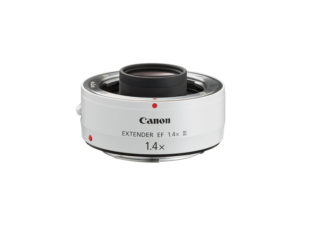 This year had seen Nikon introduce a 3rd generation 2x tele-extender, the big deal, an aspherical element to improve image quality by reducing spherical aberrations. We’re now also seening a 3rd generation of extenders from Canon. While the press release and product pages don’t say anything about aspherical elements, they do say this.
This year had seen Nikon introduce a 3rd generation 2x tele-extender, the big deal, an aspherical element to improve image quality by reducing spherical aberrations. We’re now also seening a 3rd generation of extenders from Canon. While the press release and product pages don’t say anything about aspherical elements, they do say this.
These new extenders have been designed to provide faster autofocusing and improved autofocus precision with compatible EF lenses. Each extender includes an anomalous dispersion lens element for reduced chromatic aberration and enhanced optical image quality. Each extender also features a newly developed microcomputer that increases AF precision when the extenders are used with a IS Series II EF super-telephoto lens. Both extenders are equipped with rubber gaskets and seals to enhance weather resistance. A new fluorine anti-smear coating is applied to the front and rear elements of both extenders.
I use my Extender EF 1.4x II enough that if these are as good as they sound, I can certainly see a new 1.4x extender in my future.
The extenders are expected to be available in December of this year, and will cost approximately $500 a piece.
According to Canon this fall is all about the pros, and their product line up really shows it. The EF 8-15mm fisheye provides a useable fisheye for any Canon user, regardless of the camera’s crop factor, that’s a big deal if you ask me. Canon’s previous 300mm f/2.8 and 400mm f/2.8 were arguably as close to optical perfection as you could get for a lens of that class, and I expect the new ones are going to be even better. The new tele-extenders also show promise to stretch those big lenses just that much further while keeping the IQ needed to drive today’s high density digital cameras. Finally, there’s the EF 70-300mm f/4-5.6L IS USM, it seems like a bit of an odd duck in the line up, apparently pushing the lower priced entry level lens out of the catalog. That said, it is an L lens, and L lenses generally deliver optical quality commensurate of their price tags.
That just leaves, EOS 60D, certainly it shows promise as a solid upgrade for those Rebel users that are looking for a bit better control and better ergonomics.
* Direct links to the product pages and press released can be found in the related links section below.
Images courtesy of Canon Inc..
- Canon EOS 60D Product Page
- Canon EF 8-15mm f/4L Fisheye USM Product Page
- Canon EF 70-300mm f/4-5.6L IS USM Product Page
- Canon EF 300mm f/2.8L IS II USM
- Canon EF 400mm f/2.8L IS II USM Product Page
- Canon Extender EF 1.4x III Product Page
- Canon Extender EF 2x III Product Page
- Canon EOS 60D Press Release
- Canon Fall Lenses Press release